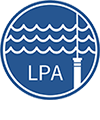The general objective of this projec is to assess the impact of current and past human activities on aquatic ecosystems by studying geochemical indicators and diatoms fossils in lake sediments. My work takes place in two study areas: Tursujuq national parc, situated in Nunavik, and Lac-Mégantic, situated in the MRC des Granit in southern Québec.
The first part of my thesis aims to conduct an integrated assessment of the past, present and future status of the aquatic ecosystems of Tursujuq National Park. We will address the critical lack of data about the current state of the park’s lakes, develop proxy records that will help understand past climate change, and combine these two datasets to predict how ecosystems will respond in the future to human impacts and changing climates. The project will have three specific objectives: a) determining the baseline limnological conditions for lakes in Tursujuq National Park; b) developing bioindicators for monitoring future environmental change in Tursujuq National Park; and c) reconstructing possible human impacts on the park’s lakes through analysis of sediment cores.
This study will cover 53 lakes throughout the park. Key limnological variables will be analyzed in the field and in laboratory, and surface sediments will be collected for taxonomic analysis and enumeration of diatoms. These data will be use to define reference conditions for lakes and to develop inference models for environmental conditions based on diatom species. Combined with geochemical analysis, these models will be used to reconstruct environmental changes with diatoms from the fossil record in sediment cores from lakes near abandoned outfitters and mining sites.
The second part of my thesis aims to access potential impacts on lake Mégantic of the 2013 oil spill. Specifically, the objectives are to a) assess the extent of contaminants in the lake following the oil spill; b) define the natural reference conditions for the Lake; and c) to assess the cumulative impact of human activities on the lake, from colonization period of the watershed to present-day.
Sediment cores were collected on an east-west transect of 2 km between the shore, near the spill site, and the middle of the lake. On the cores, chronological models will be created, and vertical variations in sediment chemistry and fossil diatoms will be analyzed. This study will provide a portrait of changes in limnological conditions and abundance of certain contaminants over time at different points in the lake.



